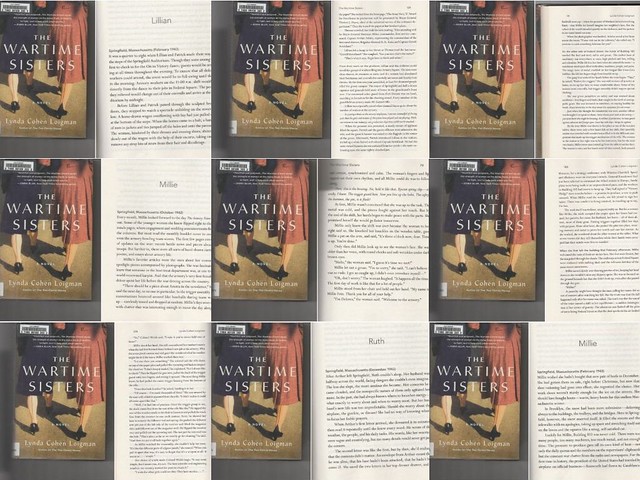
NOTE: For a writing marathon/party this afternoon, to celebrate Write Out and the National Day on Writing, we’ll be using excerpts from this historical fiction novel to inspire writing of participants. — Kevin
Reading The Wartime Sisters as someone who has been doing educational consulting work for the Springfield Armory National Historic Site for the past three years makes for an interesting web of connections to place and story.
Novelist Lynda Cohen Loigman, who grew up here in the Pioneer Valley of Western Massachusetts, notes in her Author Notes that, like many of us who live here (including me), the Springfield Armory is often a forgotten part of our region’s history.
It has only been through many visits and by running summer camps for Springfield students and facilitating professional development for teachers through a partnership between the Western Massachusetts Writing Project and the Springfield Armory that I have come to more deeply appreciate the impact the Armory had had on this region, and also, on the country itself. Today, it is a museum. In its heyday, it was a manufacturing and innovative hub, one of two national armories (the other is in Harper’s Ferry).
The Wartime Sisters story is centered around two sisters whose complicated relationship and lives, and tragedies, revolve around the Springfield Armory in the time of World War II, when the Armory facilities were in highest gear with thousands of employees and a mandate by the government to produce more and more weapons. It’s also when women and immigrants flocked to the area for work, and for patriotic ideals, as a way to help the soldiers fighting overseas.
I’ve toured many of the old Armory buildings where the action takes place — including the Armory Commander’s house, now vacant and needing repair but still, with vestiges of the position the owners once held. I’ve walked through some of the manufacturing buildings, although many are now part of a community college. I’ve seen photographs of the gardens, the water fountains, even the swimming pool. We’ve taken students to the high elevation grassy overlook, the one that looks out over Springfield, where a huge and important concert takes place in the book. Armory Curator Alex MacKenzie, who helped Loigman with her research and spent time with her, has done presentations with our student and teacher programs.
And we’ve done whole units with students and teachers on the role of women in the Armory, and the way the war transformed society through work at the facility, bringing change to the communities even after the men returned home to reclaim their jobs. Like Loigman, I have listened to the oral history recordings of some of those women, and felt moved by their narratives. Also like Loigman, we have used the Armory’s own newsletter archives to tell the stories of the people, of where they came from, and how they lived their lives with the Armory at its center.
I would have enjoyed this book on its own merits, as a character study of two sisters and a community of women at a certain historical period of time. But the grounding of the Springfield Armory as the setting of the book, as a site with deep roots, made the reading of the book even more enriching for me. Loigman surfaces the stories of the people, using history as the door to show compassion and intrigue.
For a lover of books and of local history, what more can one ask?
Peace (in the past),
Kevin
An interview with Loigman:
